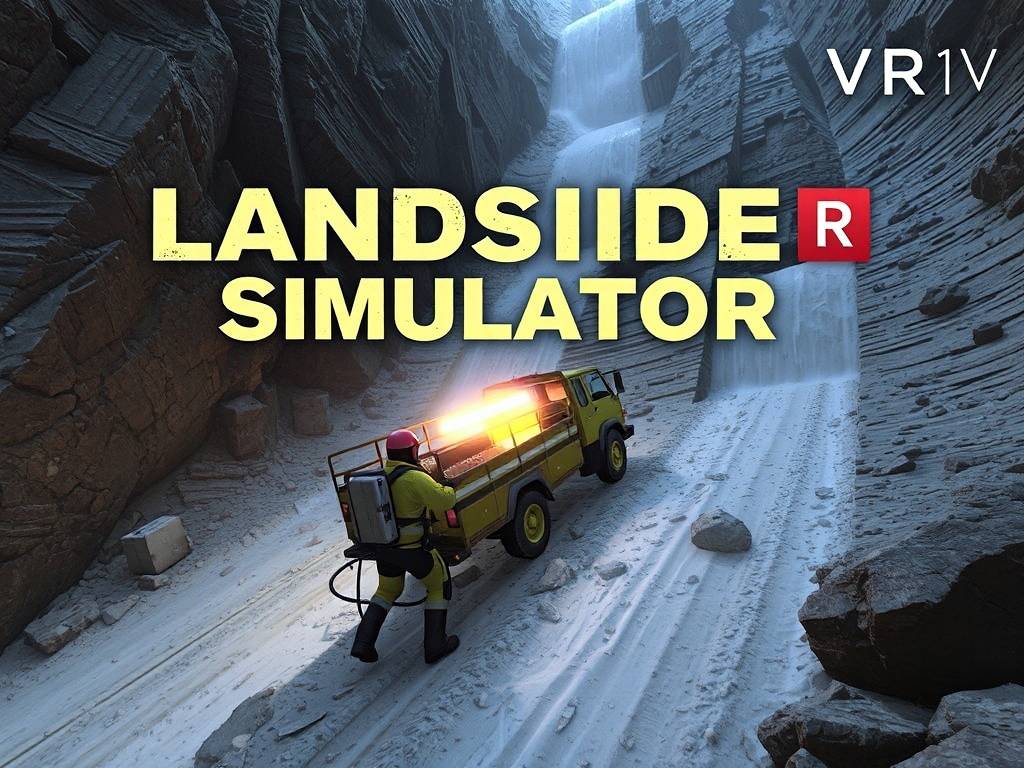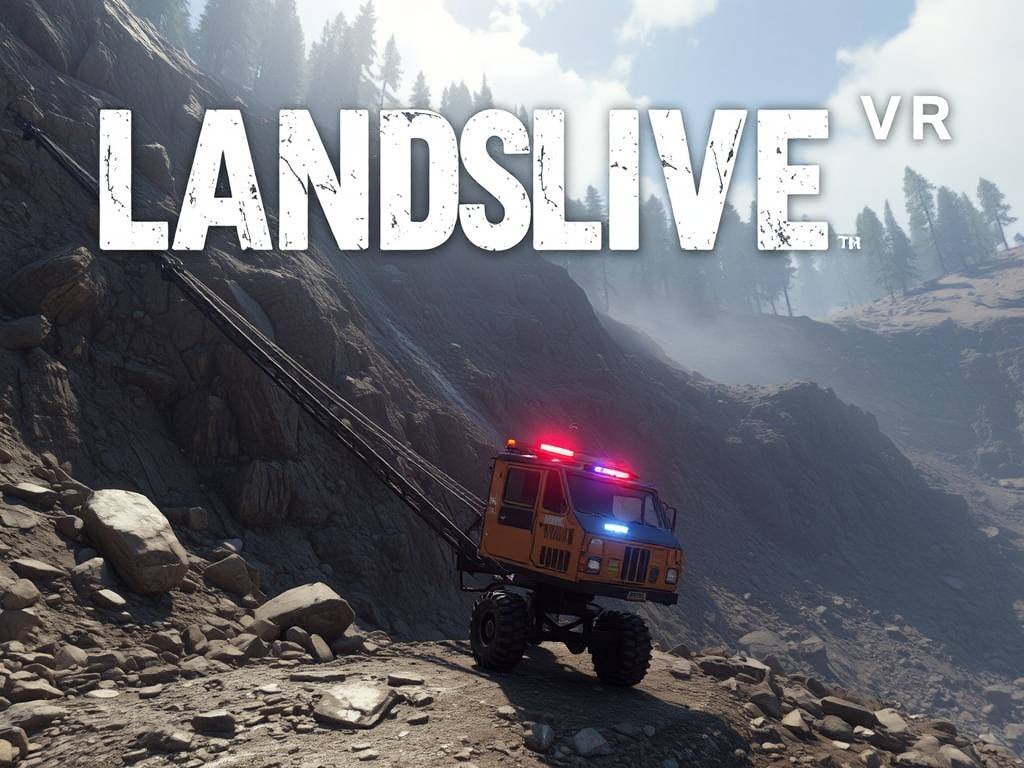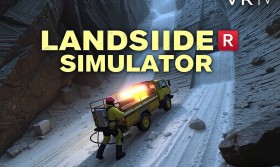From Classroom to Crisis: How the Landslide Simulator VR Emergency Response DLC is Forging Unbreakable First Responders
Imagine the ground itself has turned against you. What was once a stable hillside is now a churning, roaring river of mud, rock, and debris. The air is thick with dust, the screams of the trapped are muffled by the cacophony of destruction, and every second counts. For emergency response teams, this is not a scene from a movie; it's a potential reality that demands a level of training traditional methods struggle to provide. How do you practice for chaos? How do you rehearse for the unpredictable?
This is the critical gap filled by the groundbreaking Landslide Simulator VR: Emergency Response DLC. This isn't just an add-on; it's a paradigm shift in disaster preparedness, transforming virtual reality from a novelty into an indispensable training tool. It’s designed to move beyond theory and plunge first responders into hyper-realistic, high-stakes scenarios where they can hone their skills, make critical decisions, and build the unshakable muscle memory required during a real debris flow emergency.

At its core, the DLC is built on a sophisticated physics engine that accurately models hillside instability factors and soil mechanics in landslide modeling. This means that every scenario is dynamically generated. The terrain doesn't just collapse in a pre-scripted way; it reacts to variables like saturation levels, slope angle, and seismic triggers. Trainees learn to read the digital environment just as they would a real one, identifying early warning signs like fresh cracks, bulging ground, or sudden changes in water flow. This deep understanding of terrain assessment for first responders is the first and most crucial line of defense.
The true power of this immersive disaster training tool lies in its scenario library. We’ve moved far beyond a single, generic landslide. The DLC features a diverse range of critical situations:
- The Urban Interface Scenario: Teams must navigate a suburban neighborhood at the base of a slope, where a mudslide rescue operation is complicated by collapsed structures, submerged vehicles, and a panicked civilian population. This scenario intensely focuses on search and rescue coordination in landslides, teaching command personnel how to deploy limited resources effectively across a wide area.
- The Infrastructure Crisis Scenario: A major landslide threatens to breach a dam or wipe out a critical highway. Here, the focus shifts to large-scale evacuation protocol for landslide threats and inter-agency cooperation. Responders practice establishing evacuation perimeters, coordinating with engineers, and managing public announcements under extreme duress.
- The Remote Terrain Scenario: Inspired by wilderness emergencies, this scenario challenges teams with limited access and equipment. It emphasizes the use of technology for victim location and the complex logistics of extracting casualties from unstable, difficult-to-reach debris fields.
A common challenge in disaster response is the "fog of war"—the confusion and lack of information that hampers decision-making. The Emergency Response DLC incorporates a sophisticated communication and command system in VR training to tackle this head-on. Each team member has a role, from incident commander to field medic, and they must communicate clearly and concisely using realistic radio protocols. The system can even simulate comms breakdowns or overloads, forcing teams to adapt and find alternative methods to maintain situational awareness. This builds a level of team cohesion under extreme pressure that is difficult to achieve in tabletop exercises or even full-scale drills, which are often prohibitively expensive and logistically complex.
Perhaps the most significant advantage of this VR for public safety training is the creation of a safe training environment for high-risk scenarios. In the virtual world, a wrong decision has consequences, but not fatal ones. A trainee can experience the visceral fear of a secondary landslide without any physical danger. This safety net allows for profound experiential learning. They can fail, analyze their mistakes, and try again, reinforcing correct procedures and building confidence. This repeated, risk-free exposure is invaluable for developing the mental resilience needed to stay calm and effective when a real debris flow emergency strikes.
Furthermore, the DLC excels in providing post-scenario performance analytics for emergency teams. The system doesn't just log completion times; it generates a comprehensive debriefing report. This data-driven feedback covers everything from individual response accuracy and communication efficiency to overall team strategy. Commanders can see exactly where bottlenecks occurred, which decisions saved time, and which ones led to complications. This transforms training from a simple pass/fail exercise into a continuous improvement cycle, allowing teams to quantitatively measure their progress in landslide disaster preparedness.
The applications extend beyond traditional fire and rescue services. This technology is a powerful tool for training for geotechnical engineers in hazardous environments, allowing them to visually assess slope stability and the potential impact of their mitigation designs in a dynamic, 3D space. It’s also being adopted by public safety agencies for community education, using controlled demonstrations to vividly illustrate the importance of heeding evacuation protocol for landslide threats.

In conclusion, the Landslide Simulator VR: Emergency Response DLC represents the future of emergency preparedness. It is a comprehensive solution that addresses the multifaceted challenges of landslide response—from initial terrain assessment and victim search to complex evacuation and inter-agency command. By providing a safe, repeatable, and intensely realistic training environment, it equips our first responders with more than just knowledge; it provides them with experienced-based confidence. It forges teams that are not just trained, but truly prepared—ready to face the unimaginable chaos of a landslide and make split-second decisions that save lives. In the high-stakes world of emergency response, where the ground can literally disappear from under your feet, that kind of preparation is everything.


















